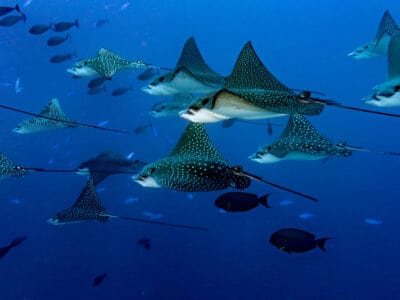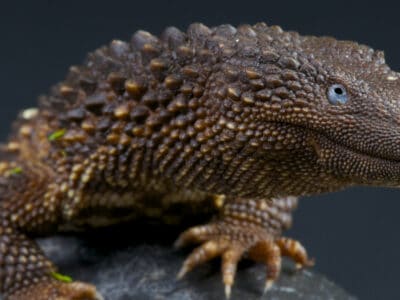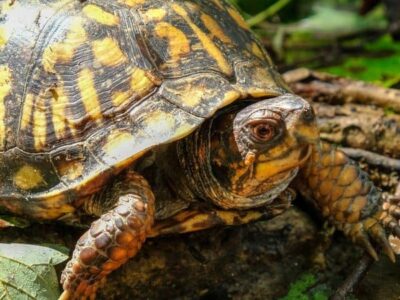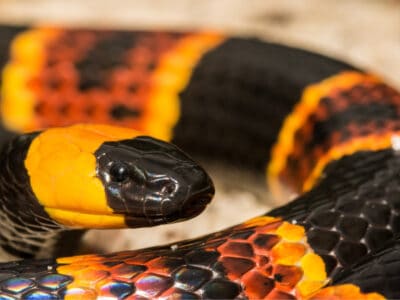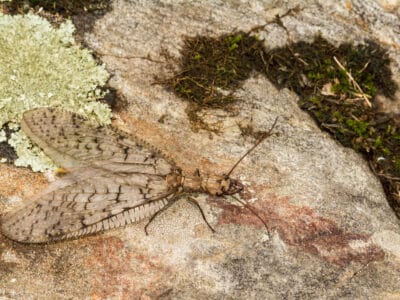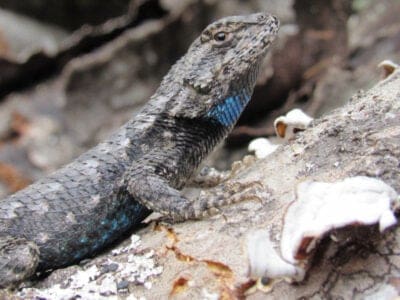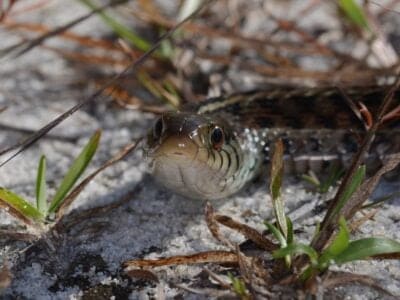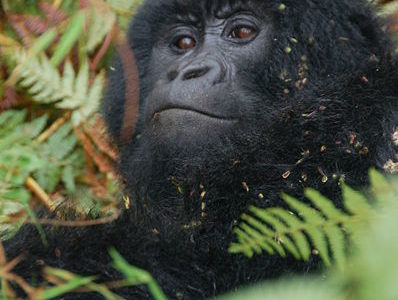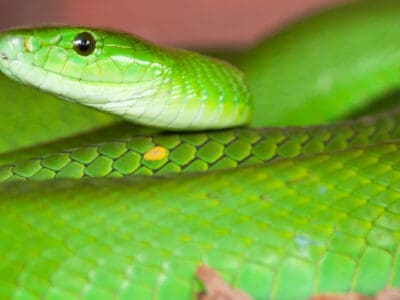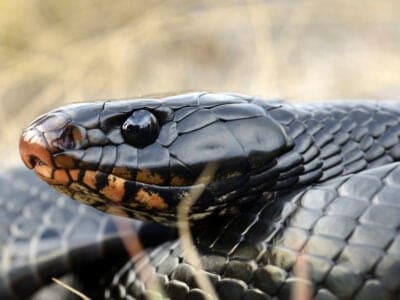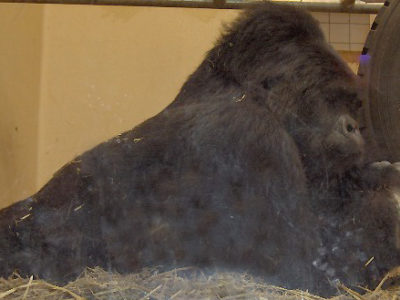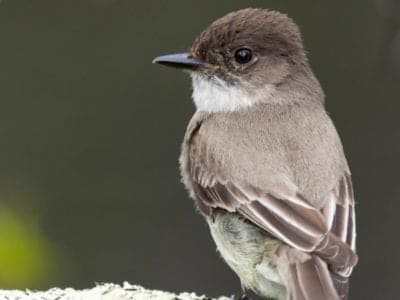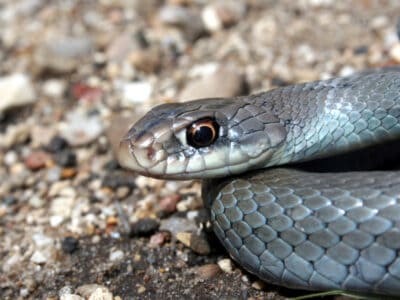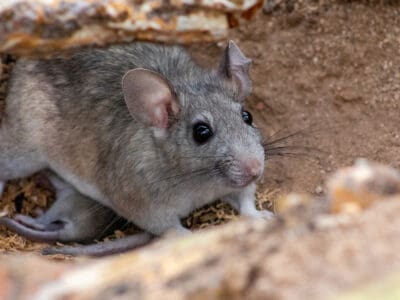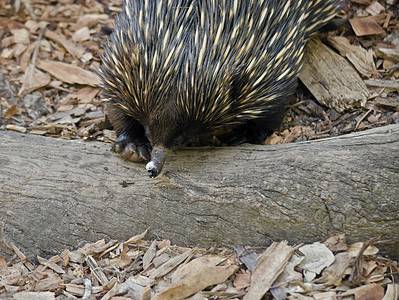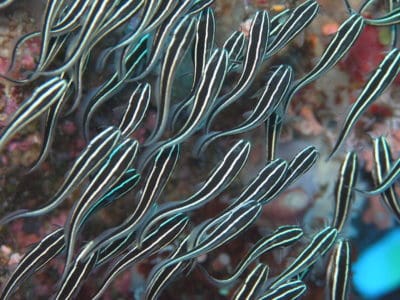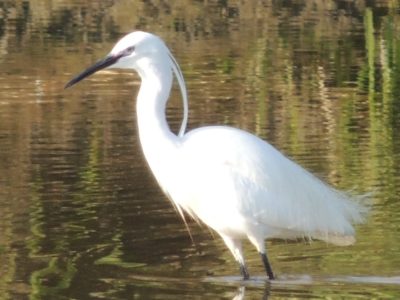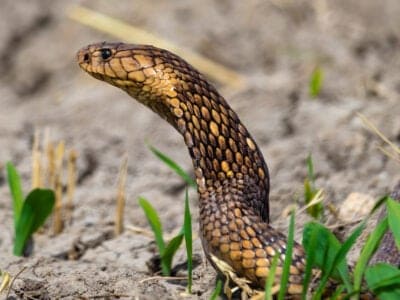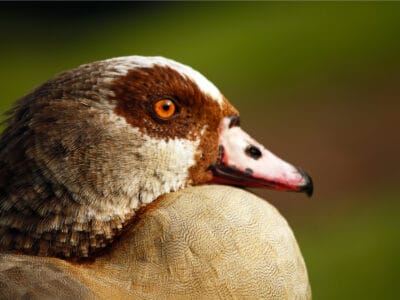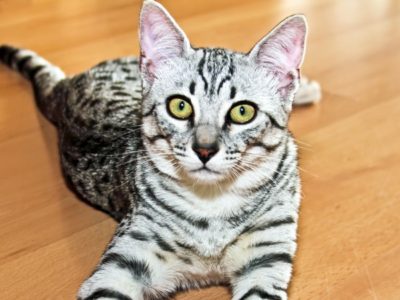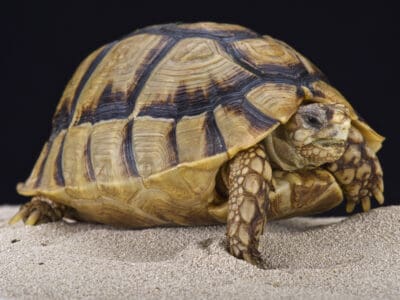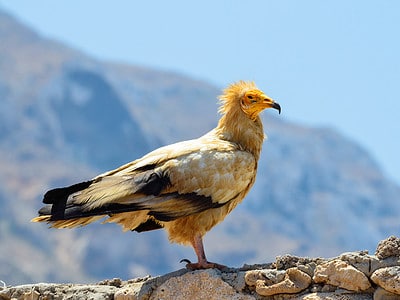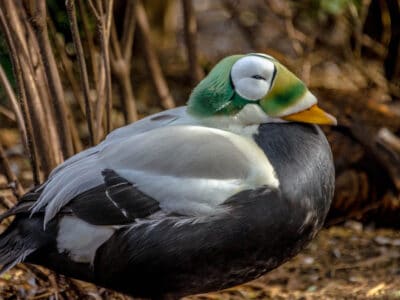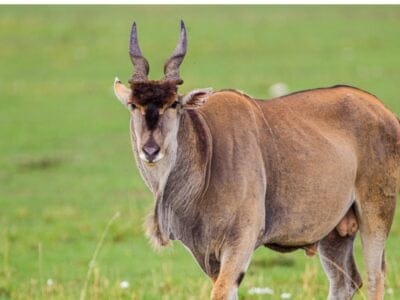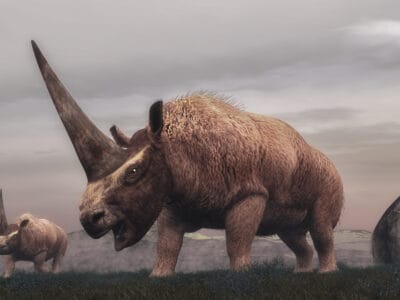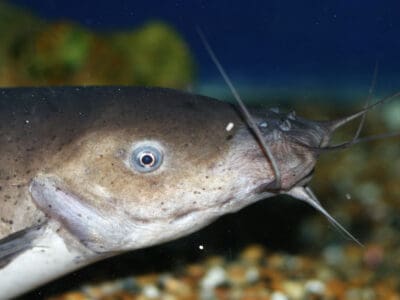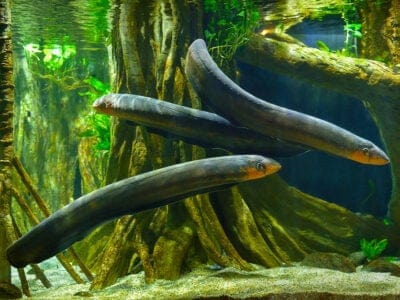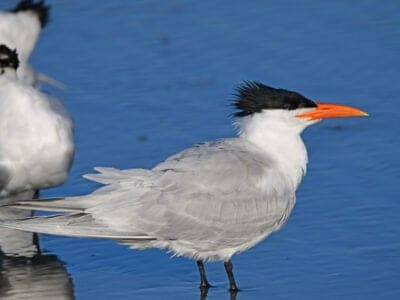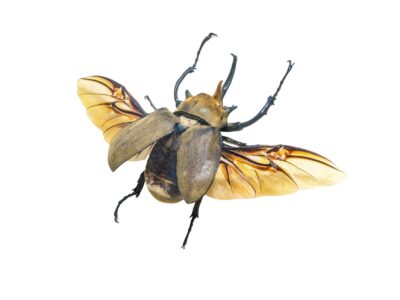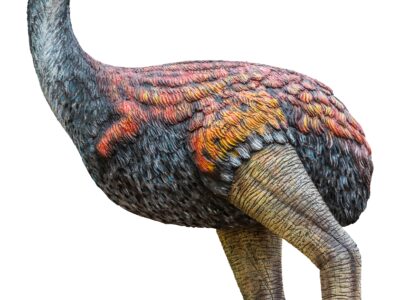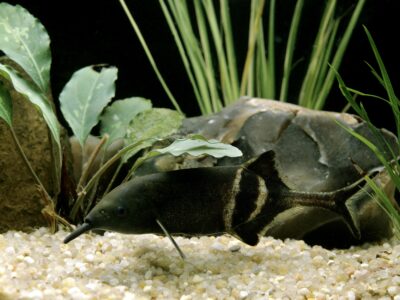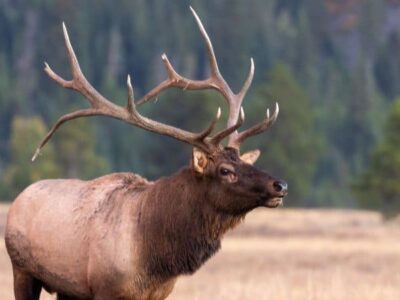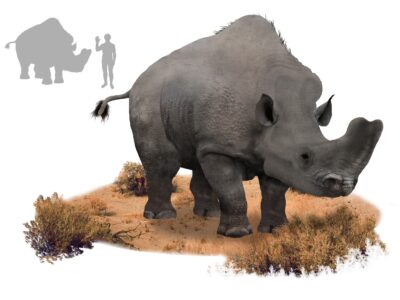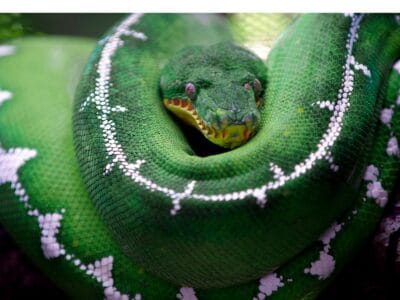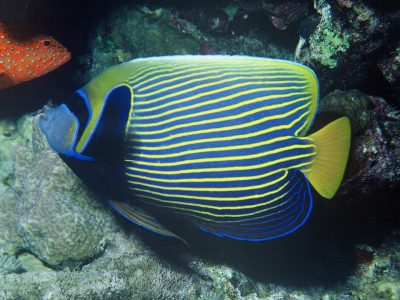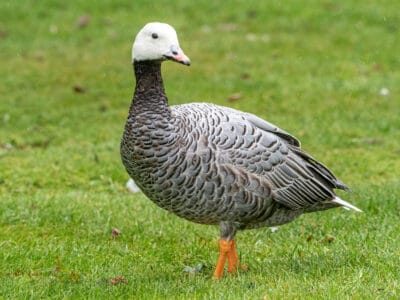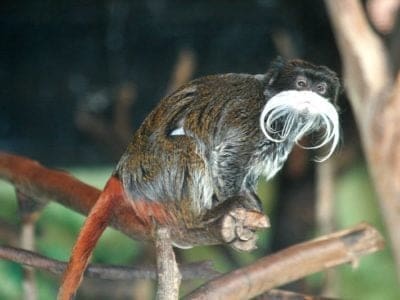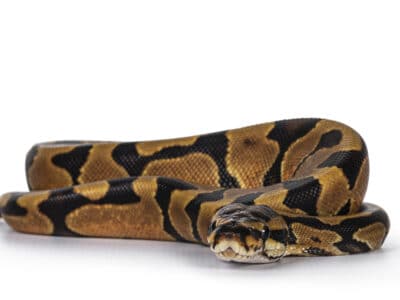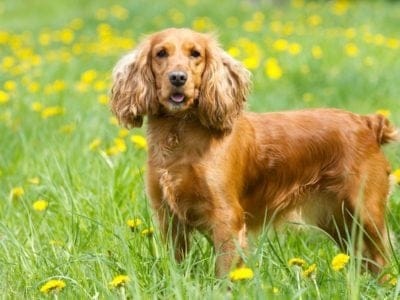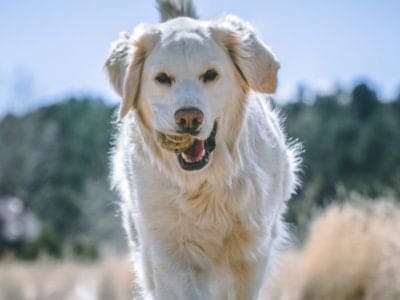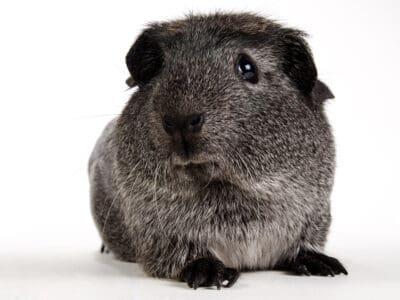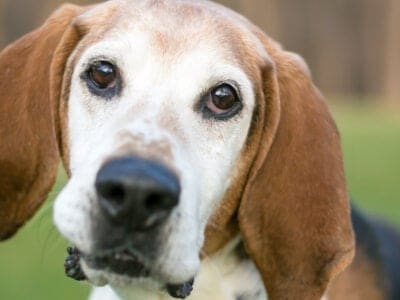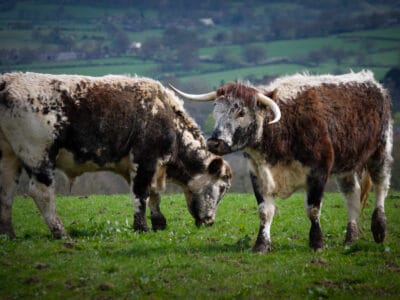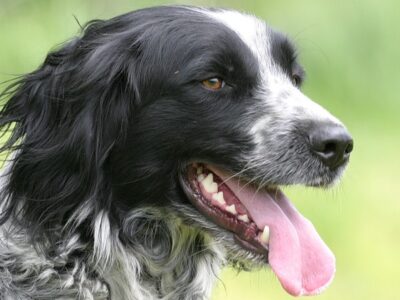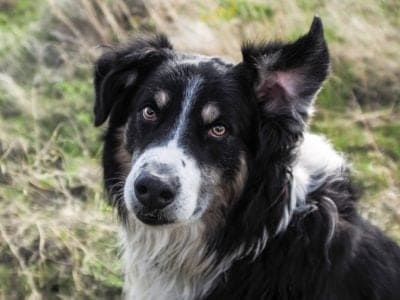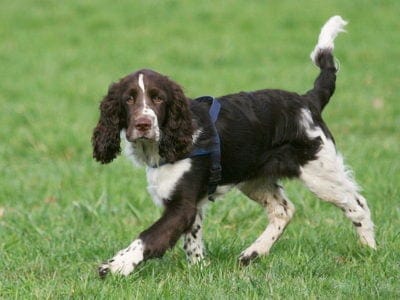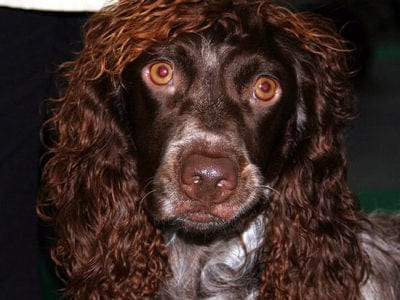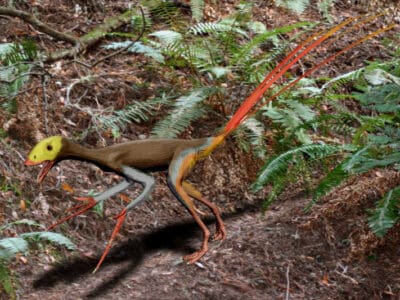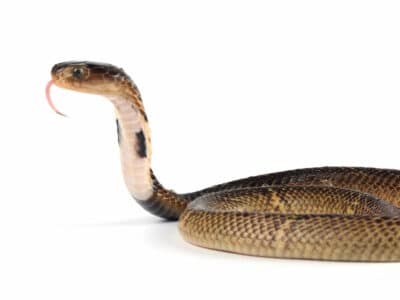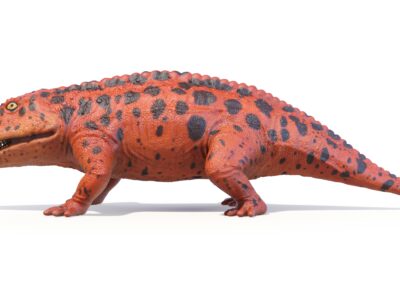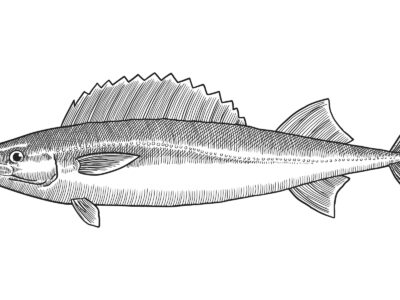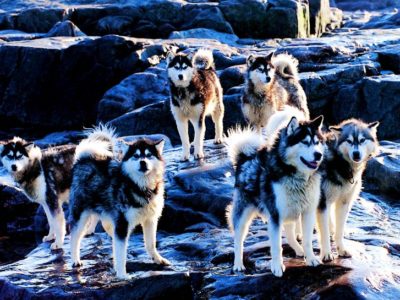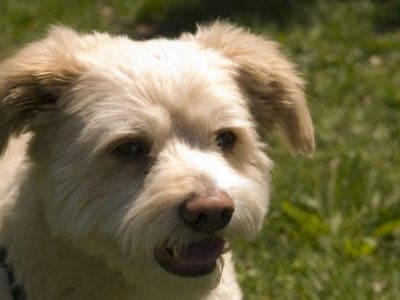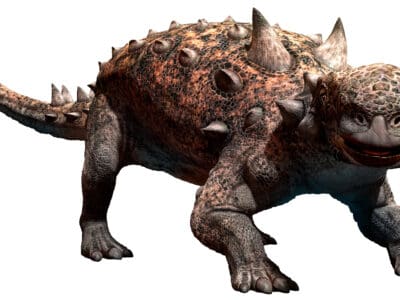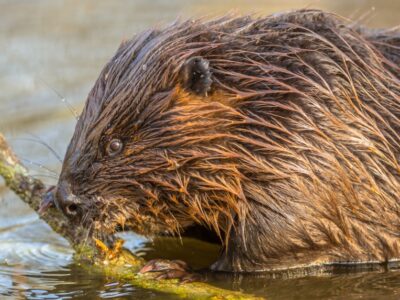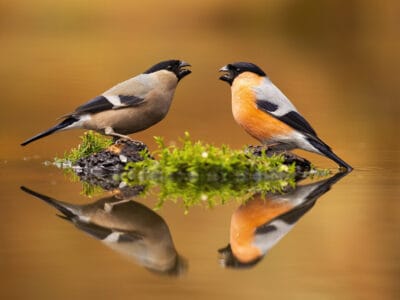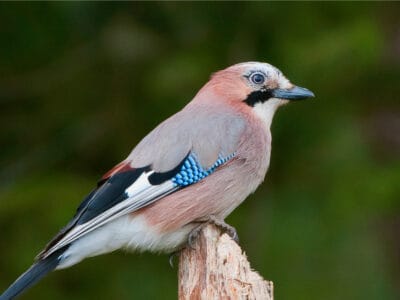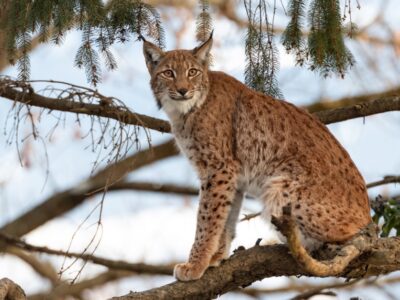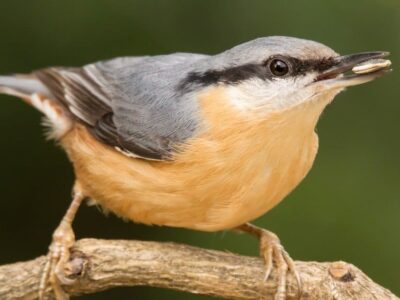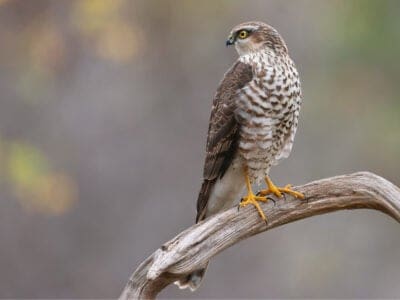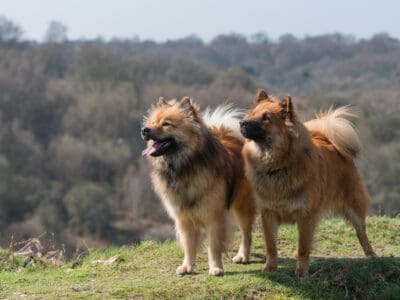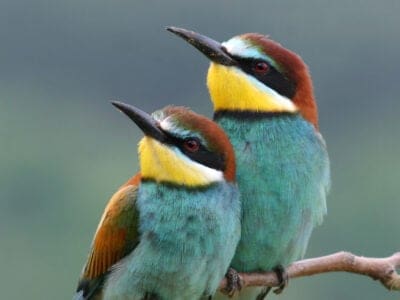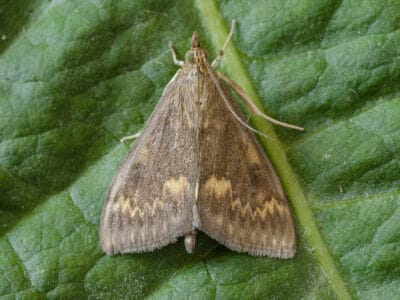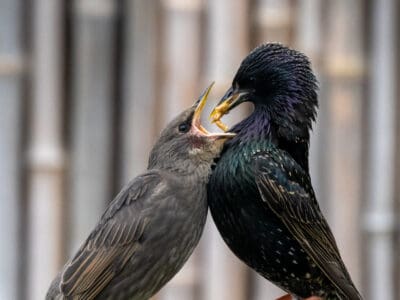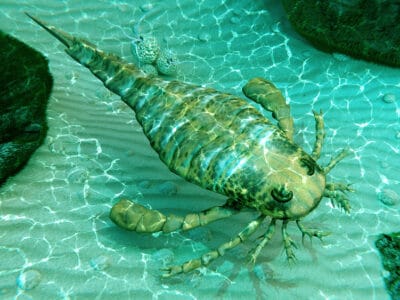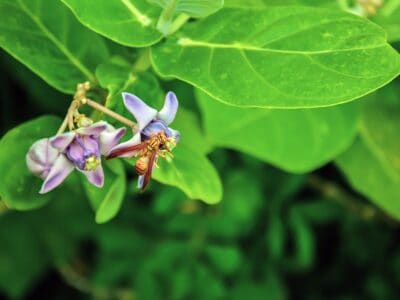Read below for information on 117 different animals that start with the letter E, from eagles to emu. The most popular is the emperor penguin, the largest penguin species on earth. The least popular is the edible frog, also known as the common water frog. Some fun facts about E name animals include:
- Elephant seals are the largest seal species in the world
- Electric Eels can generate up to a 500 volt electric shock
- Elephants can spend as many as 22 hours a day eating food
Jump to any letter
Alphabetical List of Animals That Start with E
- Eagle
- Eagle Ray
- Eared Grebe
- Earless Monitor Lizard
- Earthworm
- Earwig
- East Siberian Laika
- Eastern Barred Bandicoot
- Eastern Bluebird
- Eastern Box Turtle
- Eastern Brown Snake
- Eastern Chipmunk
- Eastern Coral Snake
- Eastern Cottontail
- Eastern Diamondback Rattlesnake
- Eastern Dobsonfly
- Eastern Fence Lizard
- Eastern Glass Lizard
- Eastern Gorilla
- Eastern Gray Squirrel
- Eastern Green Mamba
- Eastern Hognose Snake
- Eastern Indigo Snake
- Eastern Kingbird
- Eastern Lowland Gorilla
- Eastern Meadowlark
- Eastern Phoebe
- Eastern Racer
- Eastern Rat Snake
- Eastern Tiger Snake
- Eastern Turkey (Wild Turkey)
- Eastern Woodrat
- Echidna
- Eclectus Parrot
- Edible Frog
- Eel
- Eel catfish
- Eelpout
- Egret
- Egyptian Cobra (Egyptian Asp)
- Egyptian Goose
- Egyptian Mau
- Egyptian Tortoise
- Egyptian Vulture
- Eider
- Eland
- Elasmosaurus
- Elasmotherium
- Electric Catfish
- Electric Eel
- Elegant Tern
- Elephant
- Elephant Beetle
- Elephant Bird
- Elephant Fish
- Elephant Seal
- Elephant Shrew
- Elf Owl
- Elk
- Ember Tetra
- Embolotherium
- Emerald Toucanet
- Emerald Tree Boa
- Emerald Tree Monitor
- Emperor Angelfish
- Emperor Goose
- Emperor Penguin
- Emperor Tamarin
- Emu
- Enchi Ball Python
- English Angora Rabbit
- English Bulldog
- English Cocker Spaniel
- English Cream Golden Retriever
- English Crested Guinea Pig
- English Foxhound
- English Longhorn Cattle
- English Pointer
- English Setter
- English Shepherd
- English Springer Spaniel
- English Toy Terrier
- Entlebucher Mountain Dog
- Epagneul Pont Audemer
- Epicyon haydeni
- Epidexipteryx
- Equatorial Spitting Cobra
- Equus giganteus
- Ermine
- Eryops
- Escolar
- Eskimo Dog
- Eskipoo
- Estrela Mountain Dog
- Euoplocephalus
- Eurasian Beaver
- Eurasian Bullfinch
- Eurasian Collared Dove
- Eurasian Eagle-owl
- Eurasian Jay
- Eurasian Lynx
- Eurasian Nuthatch
- Eurasian Sparrowhawk
- Eurasian Wolf
- Eurasier
- European Bee-Eater
- European Corn Borer
- European Goldfinch
- European Polecat
- European Robin
- European Starling
- European Wildcat
- Eurypterus
- Evening Bat
- Evening Grosbeak
- Executioner Wasp
- Eyelash Viper
Animals that Start with E
Eagle
- Kingdom
- Animalia
- Phylum
- Chordata
- Class
- Aves
- Order
- Falconiformes
- Family
- Accipitridae
Fun Fact: Has exceptional eyesight!
The sharp-eyed eagle is among the most fearsome predators of the animal kingdom. Nicknamed the “king of all birds,” eagles are large and powerful birds of prey that appear to soar majestically in the air, searching for their next meal. Although not the most agile flyer, its remarkable speed in the air certainly belies its […] Read More
Eagle Ray
- Kingdom
- Animalia
- Phylum
- Chordata
- Class
- Chondrichthyes
- Order
- Myliobatiformes
- Family
- Myliobatidae
- Genus
- Aetomylaesus
Fun Fact: Majestic underwater bird like fish
Eagle rays are massive fish belonging to the same family as stingrays and live as long as 25 years! Conservation Status Most species are Near Threatened. Some species have different conservation categories such as: Spotted Eagle Ray – EndangeredPacific Eagle Ray – VulnerablePurple Eagle Ray – Critically Endangered Eagle Ray Summary The eagle rays are […] Read More
Eared Grebe
- Kingdom
- Animalia
- Phylum
- Chordata
- Class
- Aves
- Order
- Podicipediformes
- Family
- Podicipedidae
- Genus
- Podiceps
- Scientific Name
- Podiceps nigricollis
Fun Fact: The most populous grebe in the world
Summary The most populous grebe on Earth, the eared grebe belongs to the grebe family Podicipediformes. Also known as the black-necked grebe, you can find eared grebes throughout North America, Europe, Asia, and Africa. During summer, they breed in freshwater lakes, then travel to saline lakes to feed and molt before making their way to […] Read More
Earless Monitor Lizard
- Kingdom
- Animalia
- Phylum
- Chordata
- Class
- Reptilia
- Order
- Squamata
- Family
- Lanthanotidae
- Genus
- Lanthanotus
- Scientific Name
- Lanthanotus borneensis
Fun Fact: These lizards can practically shut down their metabolism and appear comatose for long periods.
The endangered earless monitor lizard, found only on the island of Borneo, is now threatened by illegal pet trading. Few animals are as elusive as the endangered earless monitor lizard, native only to the northwestern coastal region of the island of Borneo. This small and unique lizard was first described in 1878 by Franz Steindachner. […] Read More
Earthworm
- Kingdom
- Animalia
- Phylum
- Annelida
- Class
- Clitellata
- Order
- Opisthopora
- Family
- Limbricidae
- Genus
- Lumbricus Linnaeus
- Scientific Name
- Lumbricina
Fun Fact: They are hermaphrodites, which means they have male and female organs
Powerful Little Earth Movers Just as bees are crucial to pollinating flowers, earthworms are crucial to having those flowers grow in the first place. These worms aerate the soil and allow oxygen, water, and nutrients to enter, which then enter the roots of the plants. Their castings also get nutrients into the soil, and they […] Read More
Earwig
- Kingdom
- Animalia
- Phylum
- Arthropoda
- Class
- Insecta
- Order
- Dermaptera
Fun Fact: There are nearly 2,000 different species!
“No in-ear problems with the Earwig!” Earwigs are nocturnal insects that can be identified by the large pair of pincers at the end of their bodies. Outside, they’re found under rocks, in rotted tree bark, and in other moist places. Inside, they can be found in the pantry, where they do eat foods that haven’t […] Read More
East Siberian Laika
- Kingdom
- Animalia
- Phylum
- Chordata
- Class
- Mammalia
- Order
- Carnivora
- Family
- Canidae
- Genus
- Canis
- Scientific Name
- Canis Lupus
Fun Fact: Because East Siberian Laikas are from a very cold region, they shed heavily and require a lot of grooming.
The East Siberian Laika is an amazing hunting dog that also makes a great companion! 5 East Siberian Laika Fun Facts The East Siberian Laika is the largest of all Russian Laika dog breeds.They bark much less than the other Laika breeds.They’re extremely calm and quiet for a hunting dog!The Siberian Laika isn’t your average […] Read More
Eastern Barred Bandicoot
- Kingdom
- Animalia
- Phylum
- Chordata
- Class
- Mammalia
- Order
- Peramelemorphia
- Family
- Peramelidae
- Genus
- Perameles
- Scientific Name
- Perameles gunnii
Fun Fact: Digs funnel-shaped holes in search of insects
“They can cover three feet of ground in a single leap” Eastern barred bandicoots are omnivores with a diet of plants and insects. They have brown or gray fur with three or four vertical dark stripes on their hindquarters. On a distribution map, these mammals live in southeastern Australia and Tasmania. In the life cycle […] Read More
Eastern Bluebird
- Kingdom
- Animalia
- Phylum
- Chordata
- Class
- Aves
- Order
- Passeriformes
- Family
- Turdidae
- Genus
- Sialia
- Scientific Name
- Sialia sialis
Fun Fact: Bluebirds drop straight down on their prey from their perch, much like leopards.
“The Eastern Bluebird is the only bluebird found east of the Rockies.” These beautiful and beloved little birds are considered harbingers of spring and in some places, their song can be heard even when snow is still on the ground. Unlike so many other animals, their status is of least concern, and their numbers are […] Read More
Eastern Box Turtle
- Kingdom
- Animalia
- Phylum
- Chordata
- Class
- Reptilia
- Order
- Testudines
- Family
- Emydidae
- Genus
- Terrapene
- Scientific Name
- Terrapene carolina carolina
Fun Fact: When injured or damaged, the shell of the eastern box turtle can regenerate
When injured or damaged, the shell of the eastern box turtle can regenerate. Summary The eastern box turtle is a species of hinge-shelled turtle, also known as the box turtle. The eastern name is credited to its habitat in the eastern part of the United States. Unlike many other species in the turtle family, eastern […] Read More
Eastern Brown Snake
- Kingdom
- Animalia
- Phylum
- Chordata
- Class
- Reptilia
- Order
- Squamata
- Family
- Elapidae
- Genus
- Pseudonaja
- Scientific Name
- Pseudonaja textilis
Fun Fact:
The Eastern Brown Snake is a slender, venomous snake native to Australia. The Eastern Brown Snake can strike with tremendous speed and deliver a potent dose of venom. Although it’s a fairly common snake, encounters with humans are, fortunately, rare. 3 Fun Facts • The venom of the Eastern Brown Snake is classed as one […] Read More
Eastern Chipmunk
- Kingdom
- Animalia
- Phylum
- Chordata
- Class
- Mammalia
- Order
- Rodentia
- Family
- Sciuridae
- Genus
- Tamias
- Scientific Name
- Tamias striatus
Fun Fact: The name chipmunk is derived from an Ojibwe word that means “one who descends the trees headfirst.”
“The eastern chipmunk is the largest of the chipmunks!” To humans, chipmunks are small and cute. The eastern chipmunk is the largest of these cuddlesome rodents, and it can be tamed and make a fairly good pet despite its short lifespan. The actress Elizabeth Taylor had a pet chipmunk and even wrote a book about […] Read More
Eastern Coral Snake
- Kingdom
- Animalia
- Phylum
- Chordata
- Class
- Reptilia
- Order
- Squamata
- Family
- Elapidae
- Genus
- Micrurus
- Scientific Name
- Micrurus fulvius
Fun Fact: One of the most dangerous snakes in the USA.
“The Eastern Coral Snake is described as ‘Beautiful and Dangerous” Also called the harlequin coral snake, this slender, jewel-toned elapsid is one of the most beautiful in the United States, with its bands of red, yellow, and black. It’s also one of the most dangerous, as it produces a paralyzing neurotoxin. The good news is […] Read More
Eastern Cottontail
- Kingdom
- Animalia
- Phylum
- Chordata
- Class
- Mammalia
- Order
- Lagomorpha
- Family
- Leporidae
- Genus
- Sylvilagus
- Scientific Name
- Sylvilagus floridanus
Fun Fact: Can run up to 18 miles per hour
The eastern cottontail belongs to the rabbit and hare family Leporidae. They range throughout North America, Latin America, and northern South America. In fact, this rabbit ranks as the most common rabbit species in all of North America. They are prolific breeders, with a single female capable of producing up to 35 kits in a […] Read More
Eastern Diamondback Rattlesnake
- Kingdom
- Animalia
- Phylum
- Chordata
- Class
- Reptilia
- Order
- Squamata
- Family
- Viperidae
- Genus
- Crotalus
- Scientific Name
- C. adamanteus
Fun Fact: This is the biggest venomous snake in North America, with a few that reach 8 feet long.
The biggest venomous snake in North America is the Eastern Diamondback Rattlesnake. These snakes are big, heavy, and long. For such a big snake, they’re hard to spot in the wild because their color and markings are superb camouflage. Their yellow-bordered diamond-shaped markings make them the most brightly colored of all the diamondback rattlesnakes while […] Read More
Eastern Dobsonfly
- Kingdom
- Animalia
- Phylum
- Arthropoda
- Class
- Insecta
- Order
- Megaloptera
- Family
- Corydalidae
- Genus
- Corydalus
- Scientific Name
- Corydalus cornutus
Fun Fact: They are quite vicious and, when provoked, will administer a painful bite that stings for a long time.
The eastern dobsonfly is not actually a fly but a large winged insect with protruding mandibles. People usually see them near street lamps. They are helplessly attracted to lights and are nocturnal creatures. They are quite vicious and, when provoked, will administer a painful bite that stings for a long time. These insects have a […] Read More
Eastern Fence Lizard
- Kingdom
- Animalia
- Phylum
- Chordata
- Class
- Reptilia
- Order
- Squamata
- Family
- Phyrnosomatidae
- Genus
- Sceloporus
- Scientific Name
- Sceloporus undulatas
Fun Fact: Females are usually larger than males.
“A flourishing species of spiny lizard” The eastern fence lizard is a common spiny lizard found throughout the eastern United States and Mexico. It is easy to distinguish from other native species by its appearance. The rough, spiny scales, distinct dorsal patterns, and bright blue markings are telltale characteristics that are easily identifiable. These reptiles […] Read More
Eastern Glass Lizard
- Kingdom
- Animalia
- Phylum
- Chordata
- Class
- Reptilia
- Order
- Squamata
- Family
- Anguidae
- Genus
- Ophisaurus
- Scientific Name
- Ophisaurus ventralis
Fun Fact: When the glass lizard loses its tail it can grow another one. But the new tail lacks the markings of the old one and is usually shorter.
“It’s a lizard, not a snake!” Wondering why this legless lizard didn’t just go ahead and turn into a snake is beyond the scope of this article, but Ophisaurus ventralis is very much a lizard. It blinks, it has ears, and it can only open its mouth so wide to swallow a meal. Most of […] Read More
Eastern Gorilla
- Kingdom
- Animalia
- Phylum
- Chordata
- Class
- Mammalia
- Order
- Primates
- Family
- Hominidae
- Genus
- Gorilla
- Scientific Name
- Gorilla berengei
Fun Fact: The largest primate in the world!
“The Eastern Gorilla is known as the largest living primate” The Eastern gorilla is one of two species of gorilla and is the largest primate on earth. It is often observed that the eastern gorilla, which is most commonly found in jungles on mountain tops, is well equipped to survive in the wild. Instead of […] Read More
Eastern Gray Squirrel
- Kingdom
- Animalia
- Phylum
- Chordata
- Class
- Mammalia
- Order
- Rodentia
- Family
- Sciuridae
- Genus
- Sciurus
- Scientific Name
- Sciurus carolinensis
Fun Fact: Eastern gray squirrels use both memory and scent to find their buried caches of food during the winter.
Up to 20 eastern gray squirrels live in every acre of forest in the eastern half of the United States. A common inhabitant of forests, parks, and urban areas of the eastern United States, the eastern gray squirrel is instantly recognizable to a large portion of the country. Despite the fact that they are a […] Read More
Eastern Green Mamba
- Kingdom
- Animalia
- Phylum
- Chordata
- Class
- Reptilia
- Order
- Squamata
- Family
- Elapidae
- Genus
- Dendroaspis
- Scientific Name
- Dendroaspis angusticeps
Fun Fact: It is completely arboreal, and its green color is one of the adaptations that make life in the trees possible.
Green, reclusive, and deadly Though it’s not as venomous as other species of mamba, the eastern green mamba is still a dangerous snake if it bites you. The good news is that it is so secretive and shy that bites, including deadly ones, are uncommon. Not only that, the snake lives in the trees, so […] Read More
Eastern Hognose Snake
- Kingdom
- Animalia
- Phylum
- Chordata
- Class
- Reptilia
- Order
- Squamata
- Family
- Colubridae
- Genus
- Heterodon
- Scientific Name
- Heterodon platirhinos
Fun Fact: Eastern hognose snakes are venomous, but only to frogs and toads.
Eastern hognose snakes eat toads and frogs and are immune to the skin toxins toads excrete. The eastern hognose is a small, mildly venomous snake native to southern Ontario, Canada, and the eastern United States. Its threat displays are antics that everyone should witness at least once in their life. Incredible Eastern Hognose Facts Their […] Read More
Eastern Indigo Snake
- Kingdom
- Animalia
- Phylum
- Chordata
- Class
- Reptilia
- Order
- Squamata
- Family
- Colubridae
- Genus
- Drymarchon
- Scientific Name
- Drymarchon couperi
Fun Fact: Eastern Indigo snakes regularly chase down and eat rattlesnakes and may be immune to their venom.
The Eastern indigo snake is a long black nonvenomous snake that inhabits the southeastern United States. It is the longest snake native to North America and is known for chasing down its prey, including all native venomous snakes such as copperheads and rattlesnakes. This snake is not aggressive but will defend itself by biting or […] Read More
Eastern Kingbird
- Kingdom
- Animalia
- Phylum
- Chordata
- Class
- Aves
- Order
- Passeriformes
- Family
- Tyrannidae
- Genus
- Tyrannus
- Scientific Name
- Tyrannus tyrannus
Fun Fact: The eastern kingbird is a fierce fighter once known as the butcher king!
This eastern kingbird is mostly monochromatic, just black, dark gray, and white, but it has a secret under its cap. Beneath the velvety black feathers on its head, there is a brightly colored crown of red, orange, or yellow. It only shows this impressive crown when it has a good reason, such as courting a […] Read More
Eastern Lowland Gorilla
- Kingdom
- Animalia
- Phylum
- Chordata
- Class
- Mammalia
- Order
- Primates
- Family
- Hominidae
- Genus
- Gorilla
- Scientific Name
- Gorilla Berengei Graueri
Fun Fact: Less than 5,000 in the wild!
“The largest primates in the world.” One of the largest subspecies of the Great Apes, the Eastern lowland gorilla is one of two species of a gorilla living in Africa. They are an endangered species, with recent estimates placing the count at about 5,000 individuals left in the wild. These gorillas are vulnerable to poaching, […] Read More
Eastern Meadowlark
- Kingdom
- Animalia
- Phylum
- Chordata
- Class
- Aves
- Order
- Passeriformes
- Family
- Icteridae
- Genus
- Sturnella
- Scientific Name
- Sturnella Magna
Fun Fact: They can live up to 9 years.
Summary The Eastern Meadowlark’s bright yellow underbelly makes it easy to spot, especially in places like the United States, México, Venezuela, and throughout Central America. Residing in open prairies and pastures, it’s no wonder why “meadow” is a fixture of their name. They can lay anywhere from three to seven eggs at a time, which […] Read More
Eastern Phoebe
- Kingdom
- Animalia
- Phylum
- Chordata
- Class
- Aves
- Order
- Passeriformes
- Family
- Tyrannidae
- Genus
- Sayornis
- Scientific Name
- Sayornis phoebe
Fun Fact: This passerine bird can sing its song without ever hearing another bird vocalize first.
The Eastern phoebe is a passerine, belonging to one of the largest bird families in the world – the flycatcher family – which contains over 400 species. They sing out their name in short and unmelodic songs, though this call is primarily used by the male during the breeding season. They mate for life, though […] Read More
Eastern Racer
- Kingdom
- Animalia
- Phylum
- Chordata
- Class
- Reptilia
- Order
- Squamata
- Family
- Colubridae
- Genus
- Coluber
- Scientific Name
- Coluber constrictor
Fun Fact: Fast and Furious!
“Fast and Furious” If anyone living in the American south or in states east of the Rockies is going to see a snake, it will most likely be a black racer. Unlike a lot of snakes, this reptile, the only member of the Coluber genus, is diurnal and is not shy about raising its head […] Read More
Eastern Rat Snake
- Kingdom
- Animalia
- Phylum
- Chordata
- Class
- Reptilia
- Order
- Squamata
- Family
- Colubridae
- Genus
- Pantherophis
- Scientific Name
- Pantherophis alleghaniensis
Fun Fact: Rat snakes are medium-to-large, nonvenomous snakes that kill by constriction.
Eastern rat snakes earned their sobriquet from the fact that rats constitute a major part of their diet. The Eastern rat snake is also known colloquially as the chicken snake because it has a reputation for devouring domesticated fowl eggs whole. Despite that, humans have long lived with these snake species because they maintain the […] Read More
Eastern Tiger Snake
- Kingdom
- Animalia
- Phylum
- Chordata
- Class
- Reptilia
- Order
- Scaled Reptiles
- Family
- Elapid snakes
- Genus
- Notechis
- Scientific Name
- Notechis scutatus
Fun Fact: More than 10 percent of eastern tiger snakes are blind in at least one eye.
“The eastern tiger snake is one of the most venomous snakes in the world! Their venom contains a deadly neurotoxin that can kill a full-grown adult if left untreated.“ Summary The eastern tiger snake is ranked among the world’s top 15 most venomous and deadly snakes. This reptile is found in the mountain ranges and […] Read More
Eastern Turkey (Wild Turkey)
- Kingdom
- Animalia
- Phylum
- Chordata
- Class
- Aves
- Order
- Galliformes
- Family
- Phasianidae
- Genus
- Meleagris
- Scientific Name
- Meleagris gallopavo silvestris
Fun Fact: You can hear their gobbles up to a mile away!
“Males have large featherless, reddish heads, necks, and wattles, with fleshy growths called caruncles.” Summary The eastern turkey (Meleagris gallopavo silvestris) is a large upland ground bird native to North America. It inhabits hardwood forests with scattered clearings where it spends time foraging low to the ground or roosting in flocks in tall trees. These […] Read More
Eastern Woodrat
- Kingdom
- Animalia
- Phylum
- Chordata
- Class
- Mammalia
- Order
- Rodentia
- Family
- Cricetidae
- Genus
- Neotama
- Scientific Name
- Neotama floridana
Fun Fact: The eastern woodrat mating ritual involves a potentially deadly fight between the male and female before reproduction begins!
Eastern Woodrat Summary “Despite being a pest to humans, the eastern woodrat plays an important ecological role within its habitat.” The eastern woodrat, a medium-sized rodent also called the bush rat, is native to the eastern and central United States. It now lives from southern Illinois and the Appalachian Mountains of New York to as […] Read More
Echidna
- Kingdom
- Animalia
- Phylum
- Chordata
- Class
- Mammalia
- Order
- Monotremata
- Family
- Tachyglossidae
- Genus
- Tachyglossus
- Scientific Name
- Tachyglossus Aculeatus
Fun Fact: Also known as the Spiny Anteater!
“One of only two mammals that lay eggs!” Echidnas, formerly called the spiny or spiky anteater, are one of only two mammals that lay eggs! The other is the platypus. Interestingly, both animals are found in Australia. Echidnas are also found in New Guinea. Every other mammal gives birth to live young. Like other mammals, […] Read More
Eclectus Parrot
- Kingdom
- Animalia
- Phylum
- Chordata
- Class
- Aves
- Order
- Psittaciformes
- Family
- Psittacidae
- Genus
- Eclectus
- Scientific Name
- Eclectus roratus
Fun Fact: Does not squawk like other parrot species.
The beautifully colored Eclectus parrot is loved by many bird enthusiasts and pet owners alike. While this species is a rare find, they are medium-sized birds that predominantly live in the humid weather of the rainforest for their 30-year lifespan. Females are very maternal, and all genders will bond with multiple partners during mating season. […] Read More
Edible Frog
- Kingdom
- Animalia
- Phylum
- Chordata
- Class
- Amphibia
- Order
- Anura
- Family
- Ranidae
- Genus
- Pelophylax
- Scientific Name
- Pelophylax kl. esculentus
Fun Fact: Are known to guard the muddy banks!
Edible Frog Classification and Evolution The Edible Frog is a species of Frog found across Europe that is also known as the Common Water Frog and the Green Frog. The Edible Frog is a fertile hybrid of two other European Frogs, the Pool Frog and the Marsh Frog, that bred when populations where isolated close […] Read More
Eel
- Kingdom
- Animalia
- Phylum
- Chordata
- Class
- Actinopterygii
- Order
- Anguilliformes
Fun Fact: Eels can be a mere few inches long to 13 feet!
The body of an eel has a slimy coating, hence the phrase, “Slippery as an eel.” The most dangerous eel species is the conger. Although these fish are very snakelike in appearance, they are actually fish. They are ray-finned fishes of the order Anguilliformes, with the term “eel” referring to snake-like fish such as electric, […] Read More
Eel catfish
- Kingdom
- Animalia
- Phylum
- Chordata
- Class
- Actinopterygii
- Order
- Siluriformes
- Family
- Clariidae
- Genus
- Channallabes
- Scientific Name
- Channallabes apus
Fun Fact: Eel catfish breathe air and reach up on land to catch beetles. Scientists think they may be a missing link between fish and lizards.
“Eel catfish breathes air and reaches out of the water to eat beetles on land!” Eel Catfish Summary The eel catfish is an air-breathing fish with a long, snake-like body. It is native to the swampy tropical wetlands of the Congo River basin in south-central Africa. Local people catch and eat them and institutions and […] Read More
Eelpout
- Kingdom
- Animalia
- Phylum
- Chordata
- Class
- Actinopterygii
- Order
- Scorpaeniformes
- Family
- Zoarcidae
Fun Fact: Not actually "eels"
The term eelpout refers to around 300 species of marine fish in the family Zoarcidae. As the name implies, eelpouts roughly resemble eels with their long, elongated bodies. You can find eelpouts around the world, although most live in the Northern Hemisphere. Eelpouts are bottom-dwelling fish that live in a wide range of depths. They […] Read More
Egret
- Kingdom
- Animalia
- Phylum
- Chordata
- Class
- Aves
- Order
- Pelecaniformes
- Family
- Ardeidae
- Genus
- Egretta, Ardea, Bubulcus, Mesophoyx
- Scientific Name
- Ardea alba, Bubulcus ibis, and others
Fun Fact: Most species are relatively vocal, making harsh croaking sounds and squeals.
“The egret is a slow yet strong flier with powerful wingbeats.” Summary The egret (Ardeidae) is a long-legged, long-necked, wading bird inhabiting every continent. It lives in freshwater and saltwater habitats, such as marshes and wetlands, where it spends its day wading in shallow water, catching fish and other creatures. Most species form lifelong pair […] Read More
Egyptian Cobra (Egyptian Asp)
- Kingdom
- Animalia
- Phylum
- Chordata
- Class
- Reptilia
- Order
- squamata
- Family
- Elapidae
- Genus
- Naja
- Scientific Name
- Naja haje
Fun Fact: The Egyptian cobra is one of the largest cobras in Africa.
The Egyptian cobra is also known as the Egyptian Asp, the snouted cobra or the banded Egyptian cobra. The Egyptian cobra (asp) is massive, taking up about 8 feet in length along their heavy body. The only cobra that exceeds its size in the entire African continent is the forest cobra. With over 30 hatchlings […] Read More
Egyptian Goose
- Kingdom
- Animalia
- Phylum
- Chordata
- Class
- Aves
- Order
- Anseriformes
- Family
- Anatidae
- Genus
- Alopochen
- Scientific Name
- Alopochen aegyptiacus
Fun Fact: A duck species that resembles a goose when flying
Despite its name, the Egyptian Goose is a type of duck prominently featured in ancient Egyptian art. These birds have a natural range around the Nile River; however, their range has extended outside Egypt, with populations as far away as Florida in the United States. These birds are seldom migratory and have a diet that […] Read More
Egyptian Mau
- Kingdom
- Animalia
- Phylum
- Chordata
- Class
- Mammalia
- Order
- Carnivora
- Family
- Felidae
- Genus
- Felis
- Scientific Name
- Felis catus
Fun Fact: An ancient breed of domestic cat!
The Egyptian Mau is a rare small-to-medium size short-haired breed of domestic cat that is naturally spotted on the tips of its fur. Originating in Egypt, it is considered an ancestor of modern domestic cats as well as one of the fastest. The breed name “mau” means “cat” in Egyptian Arabic. Egyptian Mau Traits: What […] Read More
Egyptian Tortoise
- Kingdom
- Animalia
- Phylum
- Chordata
- Class
- Reptilia
- Order
- Testudines
- Family
- Testudinidae
- Genus
- Testudo
- Scientific Name
- Testudo kleinmanni
Fun Fact: The Egyptian tortoise is one of the smallest tortoise species in the world.
The Egyptian tortoise is one of the smallest tortoise species in the world. Summary The Egyptian tortoise is the second smallest tortoise in the world after the speckled tortoise. This tortoise is so small that it can comfortably fit into the palm of an average human. This species of tortoise used to be common throughout […] Read More
Egyptian Vulture
- Kingdom
- Animalia
- Phylum
- Chordata
- Class
- Aves
- Order
- Accipitriformes
- Family
- Accipitridae
- Genus
- Neophron
- Scientific Name
- Neophron percnopterus
Fun Fact: They steal large ostrich eggs and use rocks and pebbles to crack the shells.
“They huddle together for warmth.” Summary The Egyptian vulture (Neophron percnopterus) is a small Old World vulture native to Africa, Southern Europe, and Southern Asia. It inhabits open, arid areas near humans, with plenty of food options. This bird is opportunistic, devouring anything from human feces to ostrich eggs. Discover all the interesting facts about […] Read More
Eider
- Kingdom
- Animalia
- Phylum
- Chordata
- Class
- Aves
- Order
- Anseriformes
- Family
- Anatidae
- Genus
- Somateria
- Scientific Name
- S. mollissima, S. fischeri, S. spectabilis
Fun Fact: Eiders are sexually dimorphic, with males being larger and more colorful.
The eider (Somateria) is a genus of large seaducks in the cold northern hemisphere, inhabiting the Arctic tundra and Sub-Arctic coastlines. These swift fliers can reach exceptional speeds as they dive under the water’s surface, snatching mollusks and other marine animals and plants. Discover all the fascinating facts about eiders, including where they live, what […] Read More
Eland
- Kingdom
- Animalia
- Phylum
- Chordata
- Class
- Mammalia
- Order
- Artiodactyla
- Family
- Bovidae
- Genus
- Taurotragus
- Scientific Name
- Taurotragus oryx
Fun Fact: Both females and males have horns.
The spiral-horned eland is one of the biggest antelope species of Africa, displaying tawny colors with black markings throughout their body. Identification of this species over other antelope species can be difficult, but their spiral horns are a dead giveaway. Between the genders, females boast the biggest horns at up to 27 inches long. This […] Read More
Elasmosaurus
- Kingdom
- Animalia
- Phylum
- Chordata
- Class
- Reptilia
- Order
- †Plesiosauria
- Family
- †Elasmosauridae
- Genus
- †Elasmosaurus
- Scientific Name
- †Elasmosaurus platyurus
Fun Fact: Elasmosaurus is an extinct reptile species.
The Elasmosaurus has a longer neck than almost any animal to have ever existed. Classification and Scientific Name Although Elasmosaurus is often associated with dinosaurs that traveled underwater, it isn’t actually a dinosaur – it is an extinct reptile species. It was the first to be identified as being from the Order Plesiosauria, and every […] Read More
Elasmotherium
- Kingdom
- Animalia
- Phylum
- Chordata
- Class
- Mammalia
- Order
- Perissodactyla
- Family
- Rhinocerotidae
- Genus
- †Elasmotherium
- Scientific Name
- †Elasmotherium sibiricum
Fun Fact: Elasmotherium might have had a monstrous horn, giving it the name "The Siberian Unicorn."
Description & Size Elasmotherium sibiricum was a large relative of the rhinoceros. It is an extinct species that certainly crossed paths with humans and may have lived up to 30,000 years ago. Its existence lasted from the Late Miocene Era to only a few thousand years before the end of the Pleistocene, which ended 11,700 […] Read More
Electric Catfish
- Kingdom
- Animalia
- Phylum
- Chordata
- Class
- Actinopterygii
- Order
- Siluriformes
- Family
- Malapteruridae
Fun Fact: The electric catfish can discharge an electric shock up to 450 volts
The electric catfish is a family of around 21 species that can discharge an electric shock from a specialized organ. This is not the only catfish family with an electric organ, but its electrical ability is particularly well-developed compared to the others. The catfish can discharge a shock of up to 450 volts to defend […] Read More
Electric Eel
- Kingdom
- Animalia
- Phylum
- Chordata
- Class
- Actinopterygii
- Order
- Gymnotiformes
- Family
- Gymnotidae
- Genus
- Electrophorus
- Scientific Name
- Electrophorus Electricus
Fun Fact: Despite its powerful shock, electric eels have terrible vision.
“For 250 years, scientists thought the electric eel was a singular species and completely alone in its genus.” Known as the “numb fish” in some parts of the world, the electric eel isn’t a true eel. This freshwater fish resides predominantly in the Amazon, even though the larvae float to New Zealand as they hatch. The […] Read More
Elegant Tern
- Kingdom
- Animalia
- Phylum
- Chordata
- Class
- Aves
- Order
- Charadriiformes
- Family
- Laridae
- Genus
- Thalasseus
- Scientific Name
- Thalasseus elegans
Fun Fact: Have a lifespan of 20 years or more
“Elegant Terns can live to be 20 years old or more.” Elegant Terns are social birds with a loud call that sounds like, ‘kar-eek!’ They live throughout a range of rocky coastal areas, lagoons, and bays in North and South America. An adult has white feathers and a dark cap or mask, of black feathers […] Read More
Elephant
- Kingdom
- Animalia
- Phylum
- Chordata
- Class
- Mammalia
- Order
- Proboscidea
- Family
- Elephantidae
Fun Fact: Spends around 22 hours a day eating!
The elephant is the largest land animal in the world. These massive giants exhibit all kinds of complex behavior that in some ways mirror our own behavior but in other ways are distinct and unique to them. This has made them the subject of rigorous behavioral, anatomical, and cognitive studies, as well as a source […] Read More
Elephant Beetle
- Kingdom
- Animalia
- Phylum
- Arthropoda
- Class
- Insecta
- Order
- Coleoptera
- Family
- Scarabaeidae
- Genus
- Megasoma
- Scientific Name
- Megasoma elephas
Fun Fact: The males have multiple horns at the front of their bodies.
It may not be as big as an elephant or have a trunk, but the Elephant Beetle shares some interesting features with its namesake. While these beetles are not as big as elephants (or even the largest beetle in the animal kingdom), their size sure makes them an interesting specimen to study. The males have […] Read More
Elephant Bird
- Kingdom
- Animalia
- Phylum
- Chordata
- Class
- Aves
- Order
- Aepyornithiformes
- Family
- Aepyornithidae
Fun Fact: Vorombe titan, a type of elephant bird, is the largest bird that ever lived
Summary Elephant birds are an extinct family of flightless birds. They were believed to have existed on the islands of Madagascar during the Pleistocene and Holocene. They went extinct around 1000–1200 CE. The New Zealand Kiwi is their closest modern relative that is still in existence. Elephant birds belong to the ratite family, Aepyornithidae, and […] Read More
Elephant Fish
- Kingdom
- Animalia
- Phylum
- Chordata
- Class
- Chondrichthyes
- Order
- Holocephali
- Family
- Chimaeriformes
- Genus
- Callorhinchus
- Scientific Name
- Callorhinchus Milii
Fun Fact: Elephant fish are known as the Australian ghost shark, but they are not actually a shark species!
The elephant fish, also known as the Australian ghost shark, gets its name from its funny-looking elongated nose. Elephant Fish Summary The elephant fish, also known as the Australian ghost shark, is a unique-looking fish with an elongated, protruding snout. It is commonly feeding on mollusks or other invertebrates on the ocean floor of the […] Read More
Elephant Seal
- Kingdom
- Animalia
- Phylum
- Chordata
- Class
- Mammalia
- Order
- Carnivora
- Family
- Phocidae
- Genus
- Mirounga
- Scientific Name
- Mirounga
Fun Fact: The largest species of seal in the world!
Elephant seals can dive more than 5,000 feet into the ocean and can hold their breath for two hours. The trunk-like nose of this seal makes it easy to see how it got its name. The average lifespan of a northern elephant seal is nine years while an elephant seal living in the Antarctic region can live from […] Read More
Elephant Shrew
- Kingdom
- Animalia
- Phylum
- Chordata
- Class
- Mammalia
- Order
- Macroscelidea
- Family
- Macroscelididae
- Genus
- Elephantulus
- Scientific Name
- Elephantulus
Fun Fact: Found exclusively on the African continent!
You would never guess it by looking at them, but elephant shrews are more closely related to elephants than shrews. Elephant shrews are small, furry mammals that resemble giant mice or gerbils. In spite of their name, they are not actually shrews, and despite their appearance, they are not rodents either. Elephant shrews are most […] Read More
Elf Owl
- Kingdom
- Animalia
- Phylum
- Chordata
- Class
- Aves
- Order
- Strigiformes
- Family
- Strigidae
- Genus
- Micrathene
- Scientific Name
- Micrathene Whitneyi
Fun Fact: The elf owl is the smallest and lightest owl in the world
“The world’s smallest and lightest owl.” Summary The elf owl (Micrathene whitneyi) lives in North America in the Southwestern United States and throughout most of Mexico. It inhabits lowland areas with plenty of cover and nesting cavities, primarily foothill canyons and saguaros deserts. They spend their days perched on low branches waiting for their prey […] Read More
Elk
- Kingdom
- Animalia
- Phylum
- Chordata
- Class
- Mammalia
- Order
- Artiodactyla
- Family
- Cervidae
- Genus
- Cervus
- Scientific Name
- Cervus canadensis
Fun Fact: Adult males can jump eight feet vertically
The elk, or wapiti, is one of the largest land-dwelling animals in North America, Central Asia, and East Asia, where it lives in mountain meadows, forests, and forest edges. The elk is the second-largest wild herbivore, or cervid, after the moose. The Roosevelt’s elk, Tule elk, Rocky Mountain elk, and the Manitoban elk are four […] Read More
Ember Tetra
- Kingdom
- Animalia
- Phylum
- Chordata
- Class
- Actinopterygii
- Order
- Characiformes
- Family
- Characidae
- Genus
- Hyphessobrycon
- Scientific Name
- Hyphessobrycon amandae
Fun Fact: Ember tetras are one of the smallest shoaling fish in the world
Ember Tetra Summary Ember tetras are small freshwater fish that are primarily kept as pets in aquariums. They are from South America and have an orange body that makes them stand out against other fish. Ember tetras can be found in both the wild and in captivity, where they originate from the Araguaia River basins […] Read More
Embolotherium
- Kingdom
- Animalia
- Phylum
- Chordata
- Class
- Mammalia
- Order
- Perissodactyla
- Family
- Brontoteriidae
- Genus
- Embolotherium
- Scientific Name
- Embolotherium andrewsi
Fun Fact: Embolotherium had a ram on its snout like a rhino but they never used it as a weapon.
Embolotherium is a genus of heavily built mammals that lived in Mongolia during the late Eocene Epoch. While paleontologists have still been unable to find a complete fossilized skeleton of this animal, a few skull and jaw bones have been found. They had rams on their snouts like a rhino. However, this was probably ornamental […] Read More
Emerald Toucanet
- Kingdom
- Animalia
- Phylum
- Chordata
- Class
- Aves
- Order
- Piciformes
- Family
- Ramphastidae
- Genus
- Aulacorhynchus
- Scientific Name
- Aulacorhynchus prasinus
Fun Fact: Emerald Toucanets spend their lives high in the canopy of tall forests, almost never coming to the ground!
Emerald Toucanets spend their lives high in the canopy of tall forests, almost never coming to the ground! Type “Emerald Toucanet” or even the scientific name, “Aulacorhynchus prasinus” in a search engine and you are likely to find more pictures of other species than the one you are looking for. That is because most of […] Read More
Emerald Tree Boa
- Kingdom
- Animalia
- Phylum
- Chordata
- Class
- Reptilia
- Order
- Squamata
- Family
- Boidae
- Genus
- Corallus
- Scientific Name
- Corallus caninus and Corallus batesii
Fun Fact: Their teeth are as long as a fully-grown reticulated python
Emerald tree boas are beautiful nonvenomous boas that live in tropical rainforests in South America. They are native to the Amazon Basin and nearby regions in South America in the countries of Suriname, Guyana, French Guiana, Colombia, Brazil, Venezuela, and Peru. Like most snakes, they’re terrific rodent control. Some villages introduce them into their areas […] Read More
Emerald Tree Monitor
- Kingdom
- Animalia
- Phylum
- Chordata
- Class
- Reptilia
- Order
- Squamata
- Family
- Varanidae
- Genus
- Varanus
- Scientific Name
- Varanus prasinus
Fun Fact: They lay their eggs in termite nests!
“The emerald tree monitor has a tail double the length of its body.” The emerald tree monitor is a beautiful lizard that lives in the tropical rainforests of Indonesia and Papua New Guinea. It is also found in the islands of the Torres Strait near Australia. Its bright green color, slender body, and long tail […] Read More
Emperor Angelfish
- Kingdom
- Animalia
- Phylum
- Chordata
- Class
- Actinopterygii
- Order
- Perciformes
- Family
- Pomacanthidae
- Genus
- Pomacanthus
- Scientific Name
- P. imperator
Fun Fact: One of the most beautiful fish on the planet!
The emperor angelfish is a species of marine angelfish. This species is commonly found all across the globe, but it is particularly abundant in shallow reefs of the Indian Ocean and Pacific Ocean. This beautiful fish is beloved by divers, marine biologists, and artists alike. First discovered in the 1700s, this remarkable species is a […] Read More
Emperor Goose
- Kingdom
- Animalia
- Phylum
- Chordata
- Class
- Aves
- Order
- Anseriformes
- Family
- Anatidae
- Genus
- Anser
- Scientific Name
- Anser canagicus
Fun Fact: Their calls sound like a nasally “kla-ha, kla-ha, kla-ha.”
“Look for these birds as they fly low to the ground, with their wings almost touching the ground.” Summary The emperor goose (Anser canagicus) is native to Alaska’s Arctic tundra, living near coastal lagoons and inland lakes. This attractive goose has black and white markings resembling scales and is known for its solitary and quiet […] Read More
Emperor Penguin
- Kingdom
- Animalia
- Phylum
- Chordata
- Class
- Aves
- Order
- Sphenisciformes
- Family
- Spheniscidae
- Genus
- Aptenodytes
- Scientific Name
- Aptenodytes forsteri
Fun Fact: The world's largest species of penguin!
The Emperor Penguin is found on and around the Antarctic continent and is not just the largest species of penguin in the world but also one of the most unique. Instead of breeding in the warmer summer months like other penguin species, Emperor Penguins lay and incubate their eggs during the coldest time of year […] Read More
Emperor Tamarin
- Kingdom
- Animalia
- Phylum
- Chordata
- Class
- Mammalia
- Order
- Primates
- Family
- Callitrichidae
- Genus
- Saguinus
- Scientific Name
- Saguinus Imperator
Fun Fact: Has an elegant white moustache!
“The emperor tamarin is a species of tamarin allegedly named for its resemblance to the German emperor Wilhelm II.” With an elegant white mustache resembling German emperor Wilhelm II, the emperor tamarin belongs to a species of small new-world monkeys and is found mostly in the forests of South America. The name was first communicated […] Read More
Emu
- Kingdom
- Animalia
- Phylum
- Chordata
- Class
- Aves
- Order
- Casuariiformes
- Family
- Casuariidae
- Genus
- Dromaius
- Scientific Name
- Dromaius novaehollandiae
Fun Fact: The largest bird in Australia!
“An emu has a running stride of 9 feet” Emus are birds that make their home on the continent of Australia. They can grow as tall as 6.2 feet. This bird is similar in appearance to an ostrich. Emus are omnivores eating seeds, fruits, insects, and small animals. Their lifespan is from 5 to 10 […] Read More
Enchi Ball Python
- Kingdom
- Animalia
- Phylum
- Chordata
- Class
- Reptilia
- Order
- Squamata
- Family
- Pythonidae
- Genus
- Python
- Scientific Name
- Python regius
Fun Fact:
“The Enchi ball python morph is notable for its very golden-orange, coppery coloration and high blushing.” Enchi Ball Python Summary Out of the more than 4,000 ball python morphs on the market today, the Enchi variety’s background is among the most unique. It was first developed in 2002 by Sweball (based in Sweden) with a […] Read More
English Angora Rabbit
- Kingdom
- Animalia
- Phylum
- Chordata
- Class
- Mammalia
- Order
- Lagomorpha
- Family
- Leporidae
- Genus
- Oryctolagus
- Scientific Name
- Oryctolagus cuniculus domesticus
Fun Fact: Pet angora rabbits are sometimes mistaken for fluffy dogs.
An expertly researched article on the English angora rabbit where English angora rabbits live, what they eat, and high-quality pictures. Read More
English Bulldog
- Kingdom
- Animalia
- Phylum
- Chordata
- Class
- Mammalia
- Order
- Carnivora
- Family
- Canidae
- Genus
- Canis
- Scientific Name
- Canis lupus
Fun Fact: Bulldogs were originally bred to “pin” bulls.
The English bulldog is the fifth-most popular purebred dog breed, and it is the college mascot of the University of Georgia and Yale University. The English Bulldog is full of love and cuddles for the entire family, but don’t expect much more out of them. Alhough this dog breed was originally created to participate in […] Read More
English Cocker Spaniel
- Kingdom
- Animalia
- Phylum
- Chordata
- Class
- Mammalia
- Order
- Carnivora
- Family
- Canidae
- Genus
- Canis
- Scientific Name
- Canis Lupus
Fun Fact: Intelligent yet stubborn by nature!
English Cocker Spaniels are a sporting dog breed. Hundreds of years ago, the Spaniel breeds were developed in England. These breeds were descended from dogs from Spain, hence the name Spaniel. Originally, the breeds were classified by whether they were a land or water spaniel. The three land spaniels were known as the Springing -, […] Read More
English Cream Golden Retriever
- Kingdom
- Animalia
- Phylum
- Chordata
- Class
- Mammalia
- Order
- Carnivora
- Family
- Canidae
- Genus
- Canis
- Scientific Name
- Canis lupus
Fun Fact: Although their coats can get incredibly light in color, golden retrievers never have purely white coats.
The English cream golden retriever isn’t a registered breed, but that hasn’t stopped it from being incredibly popular. You can find light-colored golden retriever puppies being sold under the name of white, silver, and even platinum golden retrievers. Just remember to check the pedigree, and don’t purchase from a breeder who selects for coat color […] Read More
English Crested Guinea Pig
- Kingdom
- Animalia
- Phylum
- Chordata
- Class
- Mammalia
- Order
- Rodentia
- Family
- Caviidae
- Genus
- Cavia
- Scientific Name
- Cavia porcellus
Fun Fact: Contrary to their name, English crested guinea pigs did not originate in the UK
The English Crested Guinea Pig is one of the smallest of this breed, inhabiting areas of Europe and America. English Crested Guinea Pig Summary The English Crested Guinea Pig is one of the smallest of this breed, inhabiting areas of Europe and America. This breed is primarily kept as a pet, as it was bred […] Read More
English Foxhound
- Kingdom
- Animalia
- Phylum
- Chordata
- Class
- Mammalia
- Order
- Carnivora
- Family
- Canidae
- Genus
- Canis
- Scientific Name
- Canis lupus
Fun Fact: English Foxhounds were bred to work and live in a pack. Because of this, this breed is happiest when they are around other dogs.
English Foxhounds were bred to work and live in a pack. Because of this, this breed is happiest when they are around other dogs. The English Foxhound was bred in the 1600s as a hunting dog for British foxhunts. This canine was bred by mixing Greyhound-type hounds and large stag-hunting hounds. This mix led to […] Read More
English Longhorn Cattle
- Kingdom
- Animalia
- Phylum
- Chordata
- Class
- Mammalia
- Order
- Artiodactyla
- Family
- Bovidae
- Genus
- Bos
- Scientific Name
- Bos primigenius Taurus
Fun Fact: Although they look similar to the Texas Longhorn, they are not closely related.
The English Longhorn is a multipurpose cattle breed known to be easy to raise and is commonly in use for its meat and milk nowadays. English Longhorn Cattle Summary The English Longhorn is a multipurpose cattle breed that is known to be easy to raise and is in use as a work animal as well […] Read More
English Pointer
- Kingdom
- Animalia
- Phylum
- Chordata
- Class
- Mammalia
- Order
- Carnivora
- Family
- Canidae
- Genus
- Canis
- Scientific Name
- Canis lupus
Fun Fact:
English Pointers point their tail straight out and lift a paw off the ground when they see a rabbit, partridge, or other small prey. Origin English Pointers were bred to accompany their owner on hunting trips. When they spot a rabbit, bird, fox, or other game, these dogs stand perfectly still, pointing their tail straight […] Read More
English Setter
- Kingdom
- Animalia
- Phylum
- Chordata
- Class
- Mammalia
- Order
- Carnivora
- Family
- Canidae
- Genus
- Canis
- Scientific Name
- Canis lupus
Fun Fact: English Setters were first bred between 400 and 500 years ago.
The English Setter was likely first bred between 400 and 500 years ago. It is believed that they were bred by mixing Spanish Pointers, Water Spaniels, and Springer Spaniels. The English Setter was given its name because they were bred to “set” or quietly lay down when looking for birds to hunt. Their human hunting […] Read More
English Shepherd
- Kingdom
- Animalia
- Phylum
- Chordata
- Class
- Mammalia
- Order
- Carnivora
- Family
- Canidae
- Genus
- Canis
- Scientific Name
- Canis lupus
Fun Fact: Highly intelligent and independent!
English Shepherds are excellent herding dogs and also make a good guard dog. English Shepherds descended from Shepherds’ dogs from southern Scotland and England. They are also related to Border Collies, Scotch Collies, and Australian Shepherds, though English Shepherds were more of a working dog than a show dog, like many of their cousins. While […] Read More
English Springer Spaniel
- Kingdom
- Animalia
- Phylum
- Chordata
- Class
- Mammalia
- Order
- Carnivora
- Family
- Canidae
- Genus
- Canis
- Scientific Name
- Canis lupus
Fun Fact: Friendly and eager to please!
Bred to remain in the field for most of the day, the English Springer Spaniel has great stamina and a diligent personality that make it ideal for game hunting. The English Springer Spaniel is a very common breed of gun dog that was originally created in England (probably bred from the Norfolk or Shropshire Spaniels […] Read More
English Toy Terrier
- Kingdom
- Animalia
- Phylum
- Chordata
- Class
- Mammalia
- Order
- Carnivora
- Family
- Canidae
- Genus
- Canis
- Scientific Name
- Canis lupus familiaris
Fun Fact:
The English toy terrier is a small dog breed that belongs to the toy dog group. They were bred in the 19th century originally as a vermin hunter that was small enough to hunt rats. They were developed in England from breeds known as the old English black and tan terrier dog breeds. The English […] Read More
Entlebucher Mountain Dog
- Kingdom
- Animalia
- Phylum
- Chordata
- Class
- Mammalia
- Order
- Carnivora
- Family
- Canidae
- Genus
- Canis
- Scientific Name
- Canis lupus
Fun Fact: Native to parts of the Swiss Alps!
The Entlebucher mountain dogs are closely related to the Bernese mountain dogs. They get their name from herders in the Swiss Alps. The Entlebucher mountain dogs, also known as the Entlebucher Sennenhund, are medium-sized dogs. The name Sennenhund comes from the people of the region who are called Senn. These dogs help the Senn in […] Read More
Epagneul Pont Audemer
- Kingdom
- Animalia
- Phylum
- Chordata
- Class
- Mammalia
- Order
- Carnivora
- Family
- Canidae
- Genus
- Canis
- Scientific Name
- Canis lupus
Fun Fact: Hard-working, gentle and affectionate!
This breed is prone to Von Willebrand’s Disease and hyperthyroidism.The Epagneul Pont Audemer is generally great with kids.However, it is too laid-back to be a good guard dog. The Epagneul Pont Audemer is a diligent breed and is typically easy to train and is fun-loving and affectionate. It was recognized by the United […] Read More
Epicyon haydeni
- Kingdom
- Animalia
- Phylum
- Chordata
- Class
- Mammalia
- Order
- Carnivora
- Family
- Canidae
- Genus
- Epicyon
- Scientific Name
- Epicyon haydeni
Fun Fact: Bone crushing dogs
This canine had an extremely strong jaw that could crush bones! The Epicyon haydeni was a species of dog that lived from the Early Miocene to the Late Miocene. This was around 5 to 20 million years ago. It belonged to the sub-family of Borophaginae or “bone-crushing dogs” and weighed about 200 to 300 lbs. […] Read More
Epidexipteryx
- Kingdom
- Animalia
- Phylum
- Chordata
- Family
- Scansoriopterygidae
- Genus
- Epidexipteryx
- Scientific Name
- Epidexipteryx hui
Fun Fact: Epidexipteryx was one of the smallest non-avian dinosaurs to ever exist.
Epidexipteryx is a genus of small theropod dinosaurs that lived in the middle to late Jurassic Period. They belong to a group of dinosaurs, also known as paravian dinosaurs or paraves, characterized by enlarged digits held above the ground while walking. They were non-avian dinosaurs and the smallest ones to exist. Epidexipteryx represents the earliest […] Read More
Equatorial Spitting Cobra
- Kingdom
- Animalia
- Phylum
- Chordata
- Class
- Reptilia
- Order
- Squamata
- Family
- Elapidae
- Genus
- Naja
- Scientific Name
- Naja sumatrana
Fun Fact: Its hood is actually made of many elongated ribs.
The Equatorial spitting cobra, which has many different names, can spray venom up to 1.5 meters away if it feels threatened. It is an opportunistic eater that latches on with its fangs to kill prey. With large nostrils and a round mouth, they can be quite intimidating with their loud hiss, warning you to stay […] Read More
Equus giganteus
- Kingdom
- Animalia
- Phylum
- Chordata
- Class
- Mammalia
- Order
- Perissodactyla
- Family
- Equidae
- Genus
- Equus
- Scientific Name
- Equus giganteus
Fun Fact: Equus giganteus is the largest species of horse that has ever lived.
Whether domesticated or you happen to catch a glimpse of wild horses running in the fields, most people would agree that horses are among the most majestic creatures. Like most animals today, the prehistoric version of modern-day horses used to be bigger and even more majestic. Perhaps the biggest of them all was the Equus […] Read More
Ermine
- Kingdom
- Animalia
- Phylum
- Chordata
- Class
- Mammalia
- Order
- Carnivora
- Family
- Mustelidae
- Genus
- Mustela
- Scientific Name
- Mustela erminea
Fun Fact: A very bold and ferocious predator!
Despite its small size, the ermine has a reputation as a fierce and territorial carnivore that can take on animals even bigger than itself. The ermine is a type of weasel with a slender body that inhabits the temperate and arctic regions of Eurasia and North America. Also commonly known as the stoat or the […] Read More
Eryops
- Kingdom
- Animalia
- Phylum
- Chordata
- Class
- Amphibia
- Order
- Temnospondyli
- Family
- Eryopidae
- Genus
- Eryops
- Scientific Name
- Eryops megacephalus
Fun Fact: Unlike modern amphibians, Eryops had a well-developed rib cage
Eryops is a genus of extinct, primitive amphibians that lived in the swamps of the Permian Period (about 299 to 251 million years ago). It is an ancient relative of modern-day amphibians, such as frogs, toads, and salamanders. The Erypops looked more like a giant salamander than a toad. Description and Size Eryops is a […] Read More
Escolar
- Kingdom
- Animalia
- Phylum
- Chordata
- Class
- Actinopterygii
- Order
- Scombriformes
- Family
- Gempylidae
- Genus
- Lepidocybium
- Scientific Name
- Lepidocybium flavobrunneum
Fun Fact: Its system can’t metabolize wax esters, which can lead to unpleasantness for diners.
Escolar Summary “The Bane of Sushi Lovers” The escolar is one of the best-tasting fish around, and its nutritional values are high. However, if you eat too much of it you might pay with cramping diarrhea! Though you should only eat a little of this fish at a time, it is often mislabeled as something […] Read More
Eskimo Dog
- Kingdom
- Animalia
- Phylum
- Chordata
- Class
- Mammalia
- Order
- Carnivora
- Family
- Canidae
- Genus
- Canis
- Scientific Name
- Canis Lupus
Fun Fact: Takes pure delight in cold weather!
Eskimo dogs are affectionately known as “eskies.” They are fluffy white dogs that can be toy-, miniature, or standard-sized. This breed is very playful, intelligent, and loving. They make a great family dog and love children. While you may believe that these dogs were bred in America, this breed is actually from Germany. They descended […] Read More
Eskipoo
- Kingdom
- Animalia
- Phylum
- Chordata
- Class
- Mammalia
- Order
- Carnivora
- Family
- Canidae
- Genus
- Canis
- Scientific Name
- Canis lupus
Fun Fact: Eskipoos are called pookimos by the American Canine Hybrid Club, Designer Dogs Kennel Club, and Designer Breed Registry.
It takes most Eskipoos 15 to 17 months to become fully grown. The Eskipoo is a designer dog achieved by crossing an American Eskimo Dog with a European poodle. Breeders developed this dog, which weighs around 15 pounds and stands about 11 inches tall, as a happy-go-lucky family addition. Most have a double coat, which […] Read More
Estrela Mountain Dog
- Kingdom
- Animalia
- Phylum
- Chordata
- Class
- Mammalia
- Order
- Carnivora
- Family
- Canidae
- Genus
- Canis
- Scientific Name
- Canis lupus
Fun Fact: Very protective and stubborn!
The Estrela Mountain Dog breed started as a herd-guarding dog in Portugal. Today, this breed is the companion dog of the Portuguese police force. These large, agile dogs make excellent guard dogs because they are incredibly loyal to their masters and wary of strangers. Proper socialization in their early days is crucial; without it, you […] Read More
Euoplocephalus
- Kingdom
- Animalia
- Phylum
- Chordata
- Order
- Ornithischia
- Family
- Ankylosauridae
- Genus
- Euoplocephalus
- Scientific Name
- Euoplocephalus tutus
Fun Fact: Euplocephalus are the only Ankylosaurid dinosaurs with a bone plated head.
Euoplocephalus is a genus of giant, heavily armored dinosaurs that lived in North America during the Late Cretaceous period. This dinosaur had a well-protected body with bony plates covering its back and a clubbed tail. However, it was a gentle herbivore, and its armor was only useful for self-defense. Description & Size Euoplocephalus is a […] Read More
Eurasian Beaver
- Kingdom
- Animalia
- Phylum
- Chordata
- Class
- Mammalia
- Order
- Rodentia
- Family
- Castoridae
- Genus
- Castor
- Scientific Name
- Castor fiber
Fun Fact: Eats 20% of its weight daily!
“The Eurasian beaver was once hunted for its castoreum.” The Eurasian beaver is a large rodent native to Europe, Scandinavia, and parts of Asia. You can find it in France, Spain, and the United Kingdom. Once hunted to extinction in most of its range, the Eurasian beaver is now thriving and a conservation success story. […] Read More
Eurasian Bullfinch
- Kingdom
- Animalia
- Phylum
- Chordata
- Class
- Aves
- Order
- Passeriformes
- Family
- Fringillidae
- Genus
- Pyrrhula
- Scientific Name
- Pyrrhula pyrrhula
Fun Fact: The shy eurasian bullfinch prefers to forage very close to cover.
Eurasian bullfinches are extremely shy and don’t like to forage away from cover! Even though Eurasian bullfinches are brightly colored, they are not easy birds to spot. They prefer to avoid exposure, sticking close to dense cover and foraging within a short distance of their perch. They frequent large bushes, hedgerows, and trees along the […] Read More
Eurasian Collared Dove
- Kingdom
- Animalia
- Phylum
- Chordata
- Class
- Aves
- Order
- Columbiformes
- Family
- Columbidae
- Genus
- Streptopelia
- Scientific Name
- Streptopelia decaocto
Fun Fact: The Eurasian collared dove has been extensively studied due to its amazing ability to rapidly colonize new territories.
The Eurasian collared dove has been extensively studied due to its amazing ability to rapidly colonize new territories. The Eurasian collared dove is considered an invasive species in much of its territory. With an estimated population of 100 million or more birds worldwide, and the ability to disperse hundreds of miles in each generation, this […] Read More
Eurasian Eagle-owl
- Kingdom
- Animalia
- Phylum
- Chordata
- Class
- Aves
- Order
- Strigiformes
- Family
- Strigidae
- Genus
- Bubo
- Scientific Name
- Bubo bubo
Fun Fact: The Eurasian Eagle-owl is the second largest owl in the world with a wingspan up to six feet!
The Eurasian Eagle-owl is the second largest owl in the world with a wingspan up to six feet! Eurasian Eagle-owls, Bubo bubo, are the type species of the Bubo genus of horned owls. They are one of more than a dozen owls with the words “eagle-owl” in their name. They are large, beautiful birds with […] Read More
Eurasian Jay
- Kingdom
- Animalia
- Phylum
- Chordata
- Class
- Aves
- Order
- Passeriformes
- Family
- Corvidae
- Genus
- Garrulus
- Scientific Name
- Garrulus glandarius
Fun Fact: The Eurasian jay has the ability to mimic other sounds
The Eurasian jay is one of the most common songbird species on the entire Eurasian supercontinent. These graceful and highly intelligent birds can be seen flying around treetops and bushes. One of their most unique adaptations is the ability to bury acorns in the ground for later use. They play an important ecological role by […] Read More
Eurasian Lynx
- Kingdom
- Animalia
- Phylum
- Chordata
- Class
- Mammalia
- Order
- Carnivora
- Family
- Felidae
- Genus
- Lynx
- Scientific Name
- Lynx lynx
Fun Fact: Eurasian lynxes can survive extreme weather up to elevations of 18,000 feet
“The Eurasian lynx is an elusive cat that thrives in extreme, hostile conditions.” Sporting distinctive ear tufts and long cheek hairs, this animal is an extraordinarily effective hunter thanks to its incredible power and speed. They need so much space to hunt and mate, however, that they rarely live around humans. The remote mountains and […] Read More
Eurasian Nuthatch
- Kingdom
- Animalia
- Phylum
- Chordata
- Class
- Aves
- Order
- Passeriformes
- Family
- Sittidae
- Genus
- Sitta
- Scientific Name
- Sitta europaea
Fun Fact: Its song has been compared to a toy horn.
“The Eurasian Nuthatch can fly 12 to 13mph” Eurasian nuthatches are omnivores with a diet of insects, seeds, and various types of nuts. They live in a forest habitat made up of older, deciduous trees. These birds make a high-pitched sound that has been compared to a toy horn. Their lifespan is usually two to […] Read More
Eurasian Sparrowhawk
- Kingdom
- Animalia
- Phylum
- Chordata
- Class
- Aves
- Order
- Accipitriformes
- Family
- Accipitridae
- Genus
- Accipiter
- Scientific Name
- Accipiter nisus
Fun Fact: Females are typically 25% larger than males.
“They need adequately spaced trees to weave in and out for hunting.” Summary The Eurasian sparrowhawk (Accipiter nisus) is a small bird of prey native to Europe, Asia, and Africa. They inhabit coniferous woodlands and city parks in over 100 countries, where they zip around trees and attack their prey. Small woodland birds are their […] Read More
Eurasian Wolf
- Kingdom
- Animalia
- Phylum
- Chordata
- Class
- Mammalia
- Order
- Carnivora
- Family
- Canidae
- Genus
- Canis
- Scientific Name
- Canis lupus lupus
Fun Fact: Coloring depends on location.
The Eurasian Wolf is also known as the Russian forest wolf or common wolf. This wolf is the largest subspecies of gray wolf in the world. It can live to be up to 17 years old, though they typically live to be 6-8 years old in most regions. With a litter of about 6 pups […] Read More
Eurasier
- Kingdom
- Animalia
- Phylum
- Chordata
- Class
- Mammalia
- Order
- Carnivora
- Family
- Canidae
- Genus
- Canis
- Scientific Name
- Canis lupus familiaris
Fun Fact: This breed came about after Julius Wipfel, a German professor in the 1940s, crossed a chow chow with a German spitz with the hope of breeding the perfect spitz.
The Eurasier traces its roots back to 1960s Germany, where a small group of dog enthusiasts sought to create a breed that combined the best features of a chow chow and a wolfspitz, a type of Inuit dog. This so-called wolf-chow was later bred with Samoyeds to create the perfect, fluffy companion pup. The result […] Read More
European Bee-Eater
- Kingdom
- Animalia
- Phylum
- Chordata
- Class
- Aves
- Order
- Coraciiformes
- Family
- Meropidae
- Genus
- Merops
- Scientific Name
- Merops apiaster
Fun Fact: They can eat up to 250 bees per day!
The European Bee-Eater is a relative of the Kingfisher, with a somewhat varied habitat and unusual nest-building habits. This bird, whose feathers generally contain all the colors of the rainbow, creates burrows, rather than traditional nests. Because of this, they are prone to parasite infestations. As their name suggests, they feed primarily on bees, though […] Read More
European Corn Borer
- Kingdom
- Animalia
- Phylum
- Arthropoda
- Class
- Insecta
- Order
- Lepidoptera
- Family
- Crambidae
- Genus
- Ostrinia
- Scientific Name
- Ostrinia Nubilalis
Fun Fact: Female can lay up to 600 eggs in her 14-day lifespan
The European Corn Borer is a moth and pest of many crops, mainly corn. Originating in Europe, it was introduced to the United States and has now spread to Canada as well. As a caterpillar, it spends the winter inside the stems of plants eating its way through the plant and damaging the crops. After […] Read More
European Goldfinch
- Kingdom
- Animalia
- Phylum
- Chordata
- Class
- Aves
- Order
- Passeriformes
- Family
- Fringillidae
- Genus
- Carduelis
- Scientific Name
- Carduelis carduelis
Fun Fact: They are frequent visitors to backyard feeders, especially those containing niger seeds.
“The European goldfinch is a popular caged bird and is often illegally trafficked internationally.” Summary The European goldfinch (Carduelis carduelis) is native to Europe, Northern Africa, and Western to Central Asia. They inhabit open areas like woodlands and farmlands and spend all day covering an extensive area in search of food. They are social creatures, […] Read More
European Polecat
- Kingdom
- Animalia
- Phylum
- Chordata
- Class
- Mammalia
- Order
- Carnivora
- Family
- Mustelidae
- Genus
- Mustela
- Scientific Name
- Mustela putorius
Fun Fact: Its fur changes color in the winter!
“The European polecat can interbreed with ferrets.” The European polecat is a small, slender mammal that is related to weasels, ferrets, and minks. Despite its diminutive size, it is a swift, fierce predator. The European polecat is native to Europe, North Africa, and parts of Asia. Once considered vermin and hunted to near extinction, the […] Read More
European Robin
- Kingdom
- Animalia
- Phylum
- Chordata
- Class
- Aves
- Order
- Passeriformes
- Family
- Muscicapidae
- Genus
- Erithacus
- Scientific Name
- Erithacus rubecula
Fun Fact: Male robins are so aggressive and territorial that they will attack their own reflections.
“A European Robin is referred to as a Pretty Little Redbreasted Thug” This chubby little creature is a welcome sight to farmers and gardeners alike as it loves to eat insects, including insect pests. It also delights with its burbling song, which begins at dawn and may even continue into the night. On the other […] Read More
European Starling
- Kingdom
- Animalia
- Phylum
- Chordata
- Class
- Aves
- Order
- Passeriformes
- Family
- Tyrannidae
- Genus
- Sturnus
- Scientific Name
- Sturnus vulgaris
Fun Fact: European starlings are accomplished mimics, often copying songs or sounds of other birds and animals (frog calls, goats, cats), or even mechanical sounds and human speech!
The European Starling is one beautifully dazzling bird. During the winter season, there are little white spots covering its body but when the summertime comes, they flash their dark and glossy shades. They are sometimes considered aggressive and are very noisy when traveling in flocks. They are known to mimic other species and sing songs. […] Read More
European Wildcat
- Kingdom
- Animalia
- Phylum
- Chordata
- Class
- Mammalia
- Order
- Carnivora
- Family
- Felidae
- Genus
- Felis
- Scientific Name
- Felis catus silvestris
Fun Fact: A group of wild cats is called a destruction
The European wildcat’s tail is nearly half of its body.” The European wildcat is the ancestor of the modern housecat. The small wildcat subspecies are native to Europe, mainly living in forests. It is the size of a large house cat. Although it evolved 650,000 years ago, it was only discovered in the 18th century. […] Read More
Eurypterus
- Kingdom
- Animalia
- Phylum
- Arthropoda
- Order
- Eurypterida
- Family
- Eurypteridae
- Genus
- Eurypterus
Fun Fact: Eurypterus has a long tail that looks like a scorpion's stinger
An ancient brackish sea covered most of New York and other regions of North America around 420 million years ago. This was during the Silurian Period. In this sea lived a group of organisms known as sea scorpions (family Eurypteridae). The most popular member of this group which makes up 95% of specimens discovered so […] Read More
Evening Bat
- Kingdom
- Animalia
- Phylum
- Chordata
- Class
- Mammalia
- Order
- Chiroptera
- Family
- Vespertilionidae
- Genus
- Nycticeius
- Scientific Name
- Nycticeius humeralis
Fun Fact: The evening bat is one of the few bats that regularly has twins
Reproduction in evening bats is a bit unusual and a bit hair-raising. A female evening bat gives birth to twins whose total weight is half as much as hers. This is one of the largest babies to maternal size ratios in the animal kingdom and the largest among bats. Small in size, this unassuming bat […] Read More
Evening Grosbeak
- Kingdom
- Animalia
- Phylum
- Chordata
- Class
- Aves
- Order
- Passeriformes
- Family
- Fringillidae
- Genus
- Hesperiphona
- Scientific Name
- Hesperiphona vespertina
Fun Fact: They are friendly and non-aggressive to those in their species.
“Evening grosbeaks are common at backyard feeders.” Summary The evening grosbeak (Hesperiphona vespertina) is a large, heavyset bird with a thick conical bill native to North America. It inhabits coniferous forests in Canada and the Northern United States and frequents much of the US’s urban and suburban areas during the winter. Look to the tops […] Read More
Executioner Wasp
- Kingdom
- Animalia
- Phylum
- Arthropoda
- Class
- Insecta
- Order
- Hymenoptera
- Family
- Vespidae
- Genus
- Polistes
- Scientific Name
- Polistes carnifex
Fun Fact: The Executioner Wasp's sting is one of the most painful in the world.
The Executioner Wasp’s sting is one of the most painful in the world. Summary The Executioner Wasp (Polistes carnifex) is a large wasp native to central and South America. The wasp is one of the largest wasps in South America. It is most popular for its painful string, which is supposedly more painful than the […] Read More
Eyelash Viper
- Kingdom
- Animalia
- Phylum
- Chordata
- Class
- Reptilia
- Order
- Squamata
- Family
- Viperidae
- Genus
- Bothriechis
- Scientific Name
- Bothriechis schlegelii
Fun Fact: While the eyelash viper can be a pet, be cautious – they are extremely venomous!
The eyelash viper has a distinct set of scales above their eyes that look like bold eyelashes. The eyelash viper appears in many different colors, making it attractive to the pet trade. It gives birth to live young, carrying along the eggs for half of the year before they are born. Their lifespan is at […] Read More
Popular Animals starting with E
Newest Animals that Start with the Letter E
The most recently added Animals that start with the letter E.

English Angora Rabbit
Pet angora rabbits are sometimes mistaken for fluffy dogs.
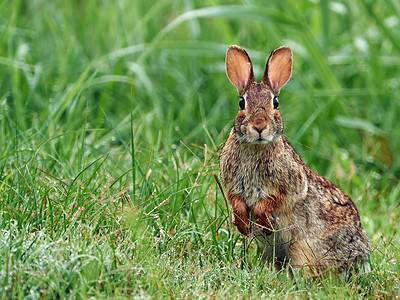
Eastern Cottontail
Can run up to 18 miles per hour
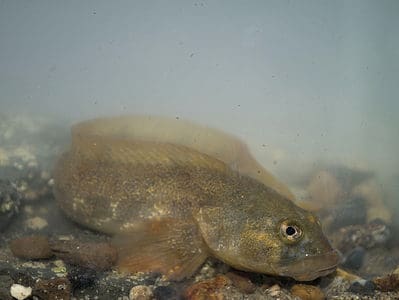
Eelpout
Not actually "eels"

Animal by Letter Lists
- Animals that Start with A
- Animals that Start with B
- Animals that Start with C
- Animals that Start with D
- Animals that Start with E
- Animals that Start with F
- Animals that Start with G
- Animals that Start with H
- Animals that Start with I
- Animals that Start with J
- Animals that Start with K
- Animals that Start with L
- Animals that Start with M
- Animals that Start with N
- Animals that Start with O
- Animals that Start with P
- Animals that Start with Q
- Animals that Start with R
- Animals that Start with S
- Animals that Start with T
- Animals that Start with U
- Animals that Start with V
- Animals that Start with W
- Animals that Start with X
- Animals that Start with Y
- Animals that Start with Z
Thank you for reading! Have some feedback for us? Contact the AZ Animals editorial team.




